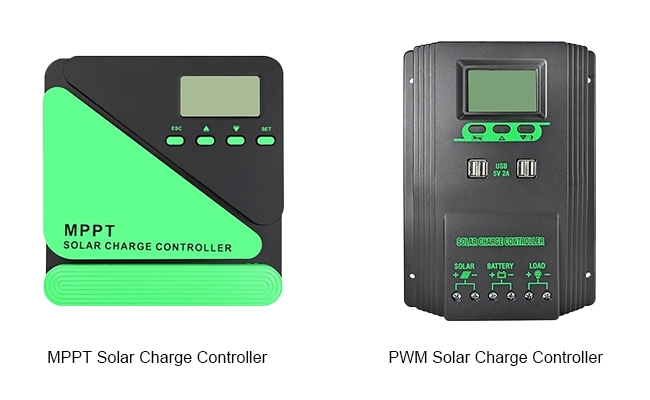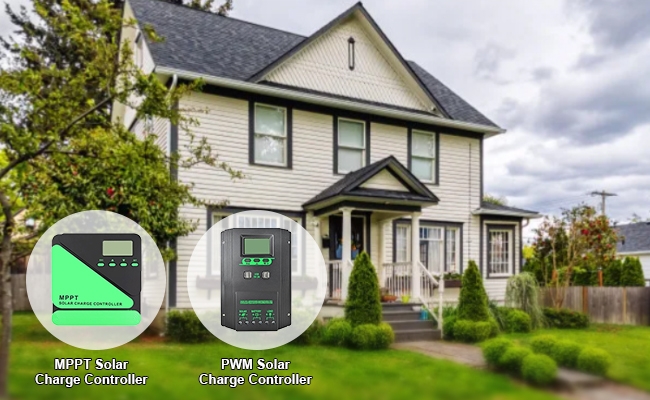Solar energy is one of the most sustainable and renewable sources of power available today, and its popularity is growing rapidly as technology advances. Solar power systems primarily consist of solar panels, batteries, and a crucial component known as a solar charge controller. This device manages the energy that flows from solar panels to batteries, ensuring safe and efficient charging. But a common question arises: can a solar power charge controller operate effectively in cloudy conditions, where sunlight is limited? The answer is yes, though there are some essential nuances to understand. In this article, we will explore how solar charge controllers function in various weather conditions, particularly on cloudy days, and what factors impact their performance.

Basics of a Solar Charge Controller
A solar system charge controller serves as the intermediary between solar panels and batteries, ensuring that the batteries receive a steady flow of charge without being overcharged or discharged beyond safe limits. There are two primary types of solar charge controllers: Pulse Width Modulation (PWM) and Maximum Power Point Tracking (MPPT).
PWM Solar Charge Controllers. These are simpler and typically less expensive than MPPT controllers. PWM charge controllers work by gradually reducing the current as the battery approaches full charge, maintaining the voltage within a safe range for the battery.
MPPT Solar Charge Controllers. More advanced than PWM controllers, MPPT controllers actively track the maximum power point of the solar panel output. This enables them to adjust their settings dynamically and harvest more energy, especially in varying light conditions.
When sunlight is abundant, both PWM and MPPT solar controllers work efficiently. However, cloudy or overcast conditions, which significantly reduce sunlight, can impact their performance differently.
Solar Charge Controller in Cloudy Conditions
Cloudy days typically reduce the amount of solar radiation that reaches the earth's surface, and this diminished sunlight affects the amount of power generated by solar panels. However, solar panels can still produce electricity in low-light conditions, albeit at a reduced rate. Here is how each type of charge controller responds to such conditions:
1. PWM Charge Controllers in Cloudy Conditions
PWM charge controllers are relatively straightforward, so they tend to be less effective in low-light situations. When sunlight levels drop due to cloud cover, PWM controllers operate at lower efficiencies because they cannot adjust the voltage dynamically to optimize power capture from the solar panel. Essentially, PWM solar charge controllers can only work with the lower power output generated by the panel, which may be insufficient to charge the battery effectively.
While a PWM solar controller will continue to operate in cloudy weather, the reduced power may not be enough to keep up with battery demands, especially if the system is heavily relied upon or is powering high-load devices. However, in systems where only a minimal or intermittent load is present, a PWM solar controller may still perform satisfactorily.
2. MPPT Charge Controllers in Cloudy Conditions
MPPT charge controllers are better suited for low-light conditions as they have the ability to track and adjust to the optimal power point of the solar panel, even when sunlight levels fluctuate. This adaptability allows MPPT controllers to extract more power from the solar panel during cloudy conditions, often providing up to 20-30% more energy than PWM controllers in the same scenario.
When a cloud passes overhead, causing a dip in sunlight, MPPT solar charge controller can adjust the voltage and current to maximize the available power. This makes MPPT solar controllers highly effective in unpredictable weather, as they continue to optimize the charge cycle and can compensate to a certain extent for the reduced output. In areas with frequent cloud cover, MPPT charge controller may be a more practical choice for maintaining battery charge levels.

Factors Impacting Performance on Cloudy Days
While MPPT controllers can adjust to lower light levels, several factors impact the overall performance of a solar charge controller on cloudy days:
- Panel Efficiency. The efficiency of the solar panel itself plays a significant role in the amount of power it can generate under cloud cover. High-efficiency panels, such as monocrystalline panels, are generally better at capturing diffused sunlight compared to polycrystalline or thin-film panels.
- Intensity of Cloud Cover. Light cloud cover allows more sunlight to penetrate than dense clouds, which can dramatically reduce solar irradiance. With heavy cloud cover, the energy generation may drop to 10-30% of the panel's normal output. In this case, even MPPT controller may struggle to charge the batteries effectively.
- Temperature. Cloudy days are often cooler than sunny days, and cooler temperatures can actually improve the efficiency of solar panels, which perform better at lower temperatures. This effect can help mitigate the loss in energy production to some degree.
- Battery Capacity. Larger battery systems with higher storage capacity can offset the effects of limited solar energy by providing more reserve power during cloudy days. However, prolonged cloudy weather will deplete battery storage if there is insufficient charging.
- System Load. If the solar system powers energy-demanding devices, the charge controller may not be able to keep up on cloudy days, even with MPPT charge controller. Lowering the load or using energy-efficient devices can help preserve battery charge in such situations.
Tips to Enhance Solar Power System Performance on Cloudy Days
If you rely on solar energy in an area with frequent cloudy weather, there are steps you can take to improve your system's performance:
- Choose MPPT Charge Controller. As discussed, MPPT solar charge controller is better suited for handling variations in sunlight. Although they are more expensive than PWM controllers, they provide greater flexibility and efficiency in low-light conditions.
- Opt for High-Efficiency Solar Panels. Monocrystalline panels are generally more efficient in cloudy weather compared to polycrystalline or thin-film panels. Investing in high-quality panels can make a noticeable difference in low-light performance.
- Increase Battery Capacity. Having a larger battery bank can help you store more energy during sunny days, giving you a reserve to draw from when the weather is overcast.
- Consider Backup Power. In areas where extended cloudy periods are common, a backup generator or grid connection can help ensure uninterrupted power. Hybrid systems can seamlessly switch between solar and backup sources as needed.
- Optimize Energy Usage. Being mindful of energy consumption, especially on cloudy days, is critical. Using energy-efficient appliances or lowering unnecessary loads can help extend battery life when solar input is limited.
Conclusion
A solar system charge controller can indeed operate in cloudy conditions, but its effectiveness will largely depend on the type of controller (PWM or MPPT), the efficiency of the solar panels, and other system components such as battery capacity. MPPT charge controllers offer superior performance on cloudy days by adjusting dynamically to maximize energy capture. In areas with frequent cloud cover, they are generally the preferred choice due to their ability to adapt to varying light conditions.
While cloudy weather does reduce solar panel output, a well-designed solar power system with MPPT charge controller, high-efficiency panels, and sufficient battery capacity can still provide reliable energy. Optimizing the system and managing energy use wisely are essential steps in ensuring that your solar power system continues to meet your needs, even when the sun isn't shining brightly. Whether it is PWM charge controller or MPPT charge controller, Inverter Online Store has a sale, such as 30a mppt solar charge controller, 40 amp mppt solar charge controller, 100 amp mppt solar charge controller, 10 amp pwm solar charge controller, 20 amp pwm solar charge controller and so on, choose the suitable charge controller according your situation.
